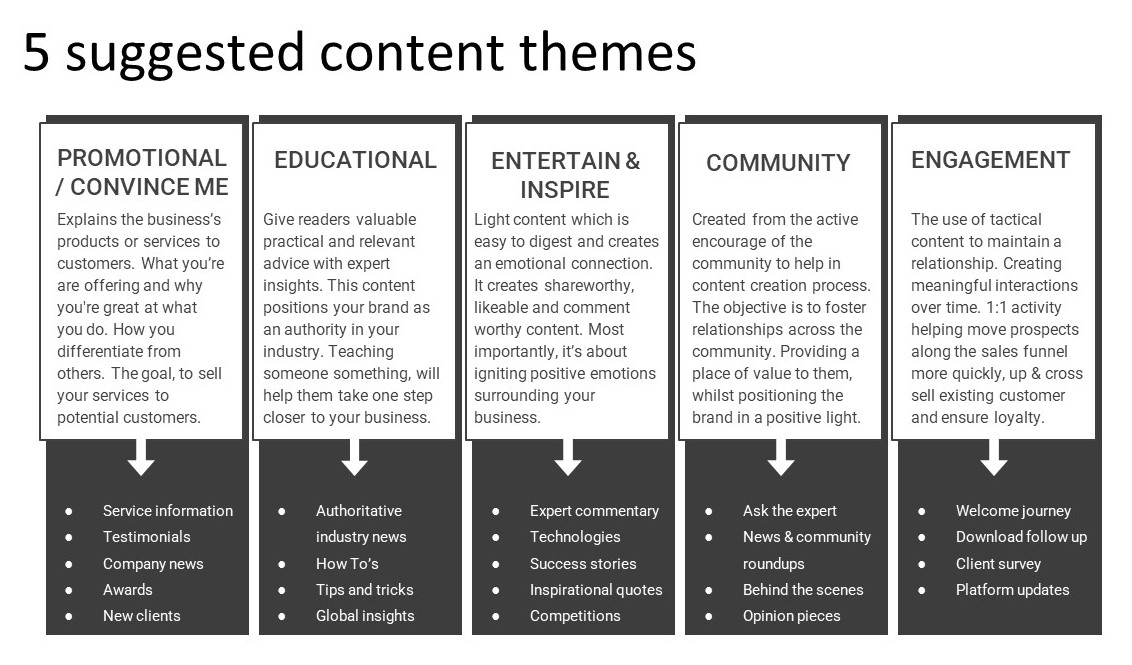Conversations, not just communications – keeping your subscribers interested over time.
Great conversation is one of the joys of life. It entertains, informs, and engages. What lessons can we learn from breaking down the art of good chat. And how can we use this to develop our planning and content approach. Developing our emails from simply communications to conversations.
Don’t talk at me, talk to me. This awareness is offered as a guide to content creation. My suggestion is that we move beyond this and treat email as we would a great conversation.
Take a moment and think back to the last good conversation you had. What made this stand out? I suspect that there was a mix of reasons including being entertained (having fun or enjoying a serious debate), being valued, and learning something.
- They showed an interest in me and what’s important in my world
- I learned something
- The time I invested was rewarded because I was entertained, informed, or given a new perspective
A series of worthwhile conversations leads to developing long lasting and mutually beneficial relationships. The aim of every good marketer.
Conversely, let’s consider bad conversations. Also easy to spot right? A sense that the other person only cares about themselves. No value to you. Definitely not entertaining (no laughing here!). Little interest and nothing new learned. No challenge (or confirmation) of your view of the world to create interest.
So, let’s take these principals of good conversation and apply them to our email approach. After all, as a direct channel, the power of email is in its ability to allow us to show our subscribers that we know them, through our content and approach. Providing what the reader needs at that specific moment in time.
Content planning based on themes
One way to achieve this is to ensure that our content over time has a mix of approach and messages. Based on the range of topics our audience want to hear about.
Using a content strategy based on identifying key themes, ensures that a variety of content is planned. This structured approach means that a mix of message, education and information is created, providing a much richer value to readers over time.
Some of the benefits of using themes when content planning include:
- Builds trust and rapport with our audience
- Explores prospects pain
- Illustrates benefits and/or overcomes objections
- Paints a picture of life with our product / service
- Shows the human / lighter / fun side of our brand
The specific themes you choose need to be right for your business. They will be based on your commercial, brand and marketing objectives. Here’s an example for a client I worked with.

The themes in the white boxes define the content strategy. Each theme has a clear explanation of purpose and value and its place in the overall mix.
Underneath each description (in the black boxes) are examples of the type of content that sit within each theme.
With these themes defined, you can then incorporate this strategy into your content planning calendar. Ensuring that content from each theme is being planned across each month.
What can also be really interesting, once these themes and examples are defined, is to run an audit of your past content (say over the last 6 months) and see how much variation in topic you have given your readers (or not as the case may be.)
To come back to the initial idea of treating email as a conversation. Does this review highlight that up until now, you’ve been guilty of just talking about yourself?
Two ears, one mouth…
Wait Nick! A great conversation is about listening I hear you cry (pun very much intended).
Email is, by its very nature, still a one-sided conversation, right? Well yes it can be, BUT it doesn’t have to be.
As email marketers we can both listen to and react to our readers. Either through explicit ‘listening’ such as preference centres, survey and poll responses, or self-selection options e.g., click on which you prefer, seaside or countryside, etc.
Or we can ‘listen’ from more implicit responses such as click reports, behavioural tracking, or smart ‘next best action’ decisioning.
All of these enable us to ‘hear’ our subscribers’ responses. Their way of telling us what they need, want and how much they are engaging with the conversation to date. By us listening, it allows us to adjust and tailor our future email conversations. Just as you would react mid conversation when chatting.
We all love a story told well
As a final thought, once we’ve started to create a range of topics and adjust our approach based on ‘listening’ feedback, how do we mix and match the way we talk to our readers to maintain interest?
Even the best conversation can get a little dull (or seem unnatural) without a variety of styles being blended in. So, when looking at WHAT you’re providing as your themes over time, also look at HOW you’re providing this.
Mix up your topics and content approach to keep your readers engaged…
- Product info / offers / promotions
- Guides / Recommendations
- What’s new
- Benefits / USP
- Success stories
- Video / Podcasts
- Tutorials / How to's
- Seasonal / key diary dates
- Reasons to and problem solving
- Social content
- Competitions
- Good practices
- Infographics
- Frequently asked questions
So next time you’re enjoying a great conversation, take a moment to ask why. And use this insight to how you converse with your email audience as an ongoing conversation.
 Photo by Mimi Thian on Unsplash
Photo by Mimi Thian on Unsplash

 How to resolve AdBlock issue?
How to resolve AdBlock issue? 
